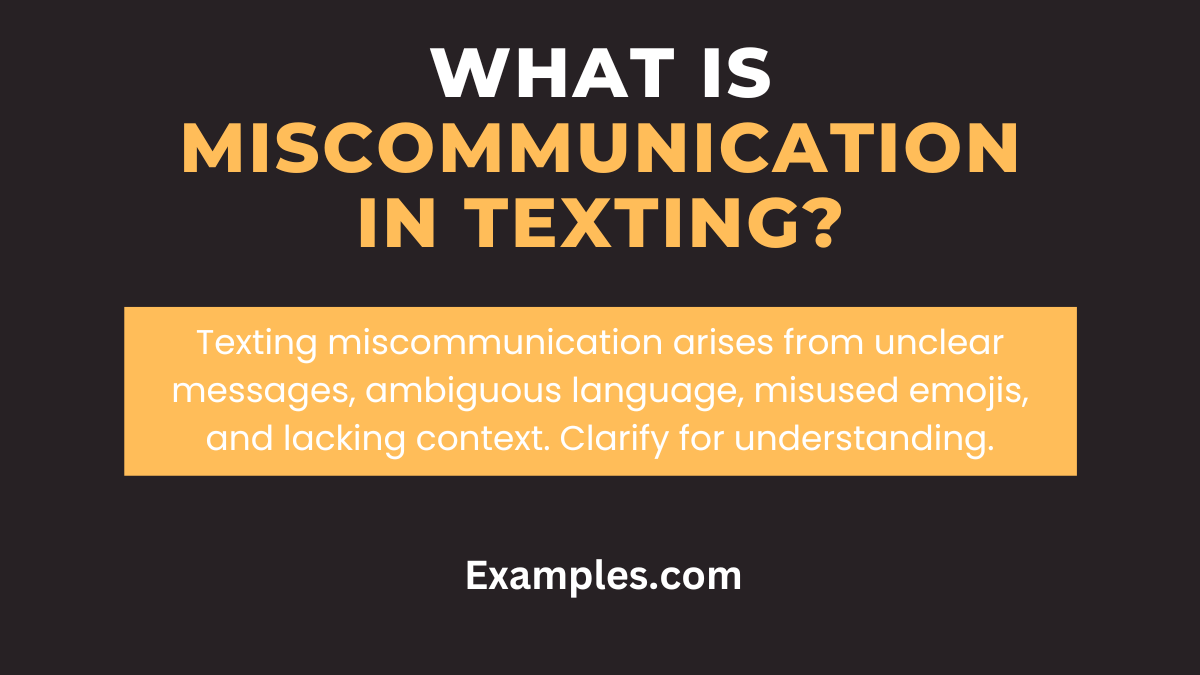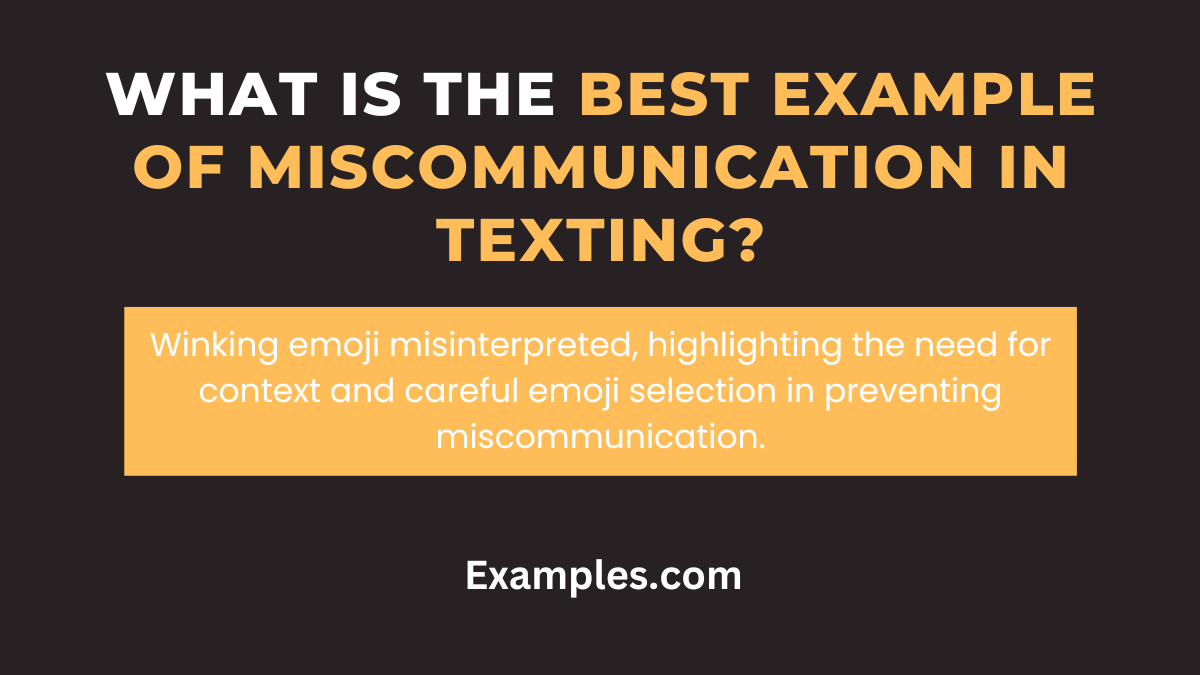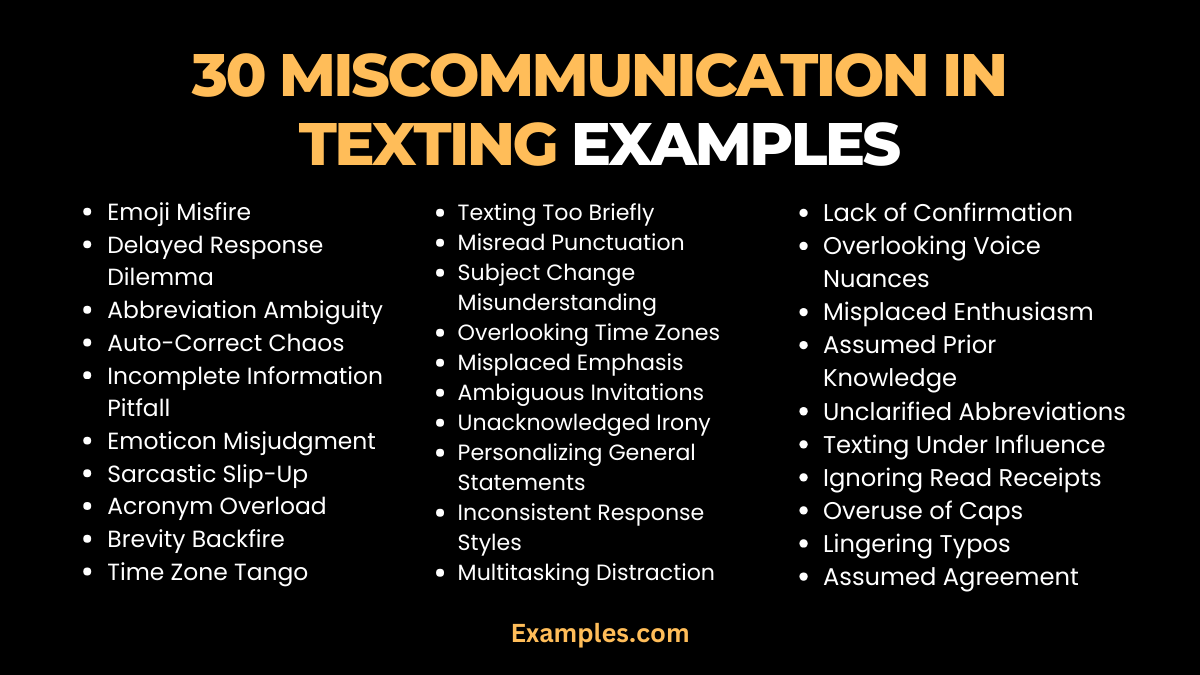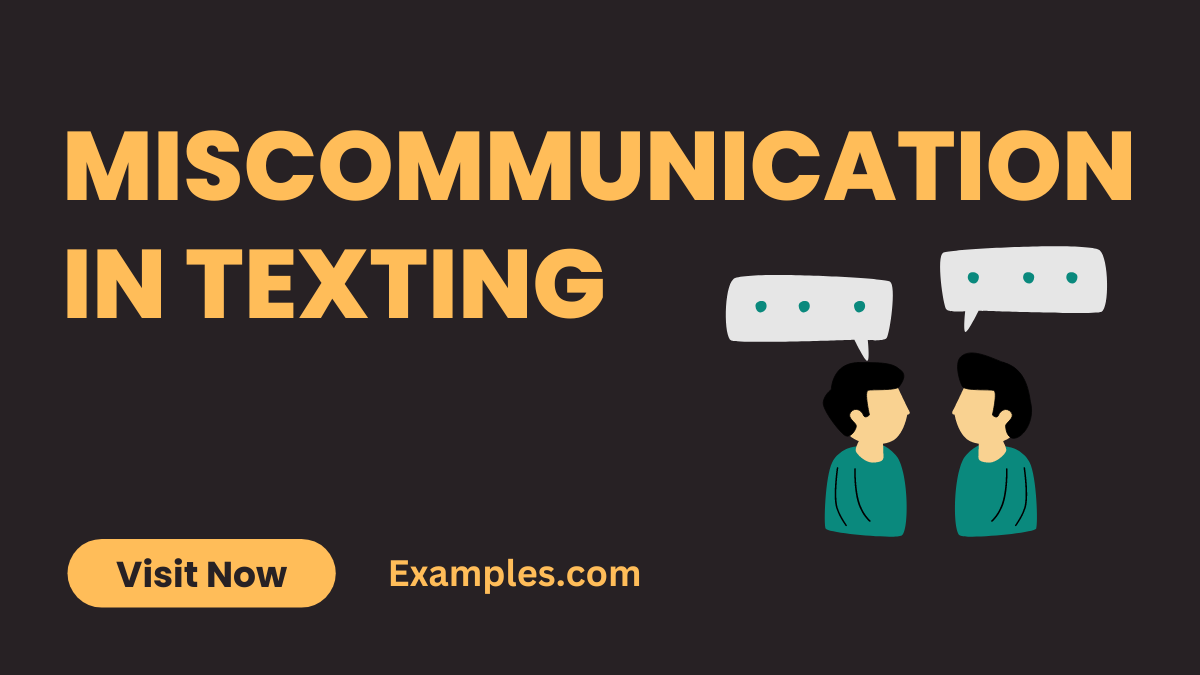29+ Miscommunication in Texting Examples
Embark on a detailed journey through the realm of miscommunication in texting. This guide unravels the intricacies of digital dialogues, shedding light on common pitfalls and providing real-life communication examples. From misunderstood tones to misinterpreted emojis, discover the nuances that often lead to confusion. Gain valuable insights to navigate text-based conversations effectively, fostering clearer and more meaningful communication in the digital age.
What is Miscommunication in Texting?

Miscommunication in texting occurs when messages are unclear or misunderstood, leading to confusion or unintended meanings. It encompasses instances where the sender’s intention is not accurately conveyed, causing confusion or misinterpretation by the recipient. This can result from ambiguous language, misused emojis, or a lack of context. Recognizing and addressing miscommunication in texting is vital for fostering clear, effective digital communication and avoiding misunderstandings in written conversations.
What is the Best Example of Miscommunication in Texting?

Consider a scenario where one person sends a playful or sarcastic message accompanied by a winking emoji. However, the recipient interprets it as serious due to the absence of tone cues. This miscommunication exemplifies how the subtle nuances of tone and intention, conveyed through emojis, can be easily misconstrued, leading to confusion and potential misunderstandings. The example underscores the importance of considering context and choosing emojis carefully to avoid unintended miscommunication in text conversations.
30 Miscommunication in Texting Examples

Explore 30 vivid miscommunication examples in texting, unveiling the nuances that can lead to confusion. This guide offers insights into the intricacies of digital communication, providing practical strategies to navigate text-based conversations effectively. From ambiguous emojis to misinterpreted tones, learn how to avoid common pitfalls and foster clearer, more meaningful communication in the digital age.
- Emoji Misfire: Sending a friendly emoji interpreted as sarcasm.
Fix: Use clear language alongside emojis. - Delayed Response Dilemma: Misinterpretation of a delayed reply.
Solution: Communicate if busy and set expectations. - Abbreviation Ambiguity: Confusion caused by misunderstood text abbreviations.
Fix: Use clear language or explain abbreviations. - Auto-Correct Chaos: Auto correct changing the meaning of messages.
Fix: Proofread messages before sending. - Incomplete Information Pitfall: Lack of details causing confusion.
Solution: Provide complete and clear information. - Emoticon Misjudgment: Misinterpretation of emoticons leading to confusion.
Fix: Choose emoticons carefully for accurate expression. - Sarcastic Slip-Up: Sarcasm misunderstood in text.
Address: Indicate sarcasm or use explicit language. - Acronym Overload: Over-reliance on acronyms causing confusion.
Fix: Limit acronyms or explain when necessary. - Brevity Backfire: Lack of details leading to confusion.
Address: Expand on important points for clarity. - Time Zone Tango: Miscommunication due to different time zones.
Solution: Specify time zones or use universal time. - Texting Too Briefly: Lack of details causing confusion.
Address: Expand on important points for clarity. - Misread Punctuation: Different interpretations of punctuation marks.
Solution: Be mindful of punctuation choices. - Subject Change Misunderstanding: Abrupt topic shifts causing confusion.
Fix: Signal topic changes explicitly. - Overlooking Time Zones: Miscommunication due to time zone differences.
Address: Specify time zones or use universal time. - Misplaced Emphasis: Misunderstanding due to misplaced emphasis.
Solution: Use italics or bold for emphasis. - Ambiguous Invitations: Unclear event invitations causing confusion.
Fix: Provide details and specifics. - Unacknowledged Irony: Irony misinterpreted in messages.
Address: Clarify ironic statements when necessary. - Personalizing General Statements: Taking general statements personally.
Solution: Ask for clarification before assuming. - Inconsistent Response Styles: Mismatched response styles causing confusion.
Fix: Align communication styles for coherence. - Multitasking Distraction: Miscommunication due to multitasking.
Address: Focus on texting during conversations. - Lack of Confirmation: Assuming understanding without confirmation.
Solution: Encourage confirmation to avoid assumptions. - Overlooking Voice Nuances: Misinterpreting tone without vocal cues.
Fix: Use explicit language to convey tone. - Misplaced Enthusiasm: Messages perceived as indifferent due to tone.
Address: Express enthusiasm explicitly. - Assumed Prior Knowledge: Assuming the recipient has prior knowledge.
Solution: Provide necessary context for clarity. - Unclassified Abbreviations: Using abbreviations without clarification.
Fix: Explain abbreviations for understanding. - Texting Under Influence: Miscommunication due to impaired texting.
Address: Avoid texting under the influence. - Ignoring Read Receipts: Misinterpreting lack of response acknowledgment.
Solution: Use read receipts to indicate message reception. - Overuse of Caps: Caps lock misinterpretation.
Fix: Use caps sparingly for emphasis, not as default. - Lingering Typos: Typos leading to misunderstanding.
Address: Proofread messages for accuracy before sending. - Assumed Agreement: Assuming agreement without explicit confirmation.
Solution: Regularly check in with your partner to ensure you are on the same page.
How to Avoid Miscommunication in Texting?
Preventing miscommunication in texting requires awareness of its pitfalls and the application of effective communication strategies. Here’s how to minimize misunderstandings:
- Use Clear and Concise Language:
- Express your thoughts in a straightforward and clear manner to reduce the chances of misinterpretation.
- Provide Context:
- When discussing complex topics, ensure you provide sufficient context to help the recipient understand the message’s intent.
- Embrace Emojis and Tone Indicators:
- Use emojis and tone indicators appropriately to convey emotions and tone, providing additional context to your messages.
- Avoid Abbreviations and Jargon:
- Minimize the use of abbreviations and jargon, as they can lead to confusion when the recipient is not familiar with them.
- Ask for Clarification:
- If you’re unsure about the meaning of a message or suspect a potential misunderstanding, ask for clarification to resolve any doubts.
- Avoid Hasty Responses:
- Take your time to compose thoughtful responses rather than rushing to reply, reducing the risk of impulsive and unclear messages.
- Proofread and Edit:
- Before sending important messages, review and edit them to ensure clarity and precision.
- Use Private Conversations:
- For sensitive or complex discussions, consider using private messaging to prevent misunderstandings that can arise in public forums.
By implementing these strategies, you can enhance your texting communication skills and minimize the likelihood of miscommunication, fostering clearer and more effective exchanges.



